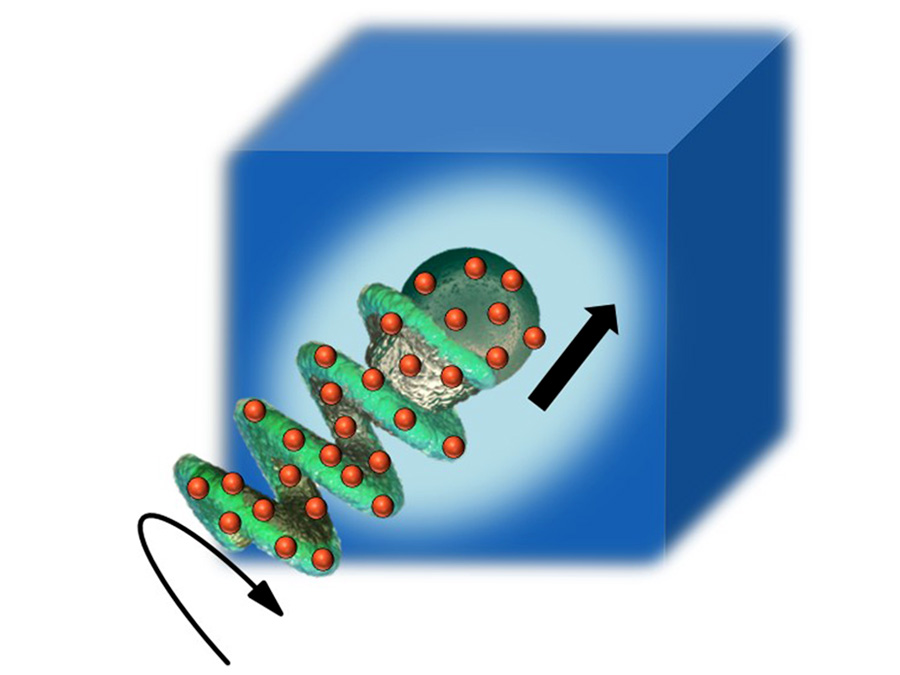Researchers develop a micropropeller that can penetrate the gastric mucosa
A local mucolytic for the stomach

The mucous layers in the mouth, stomach or in the female vaginal canal are the first barrier against bacteria and viruses. However, this thick mucus also makes it more difficult for medical drugs to reach the tissue. Even sperm cells can only swim through the sticky mucus during ovulation, when the barrier is temporarily liquefied by an increase in the pH value – a mechanism that is triggered by a woman’s body exactly when needed.
One of the areas of research of Prof. Oliver Lieleg from the Technical University of Munich (TUM) and his group is to study how such mucous linings act as a barrier against pathogens and pharmaceuticals. Before an orally administered drug can enter the blood stream, it first needs to pass through a layer of mucus, e.g. in the stomach. To facilitate mucosal penetration in cases where the human body does not aid in mucus liquefication, a team of researchers led by Prof. Lieleg joined forces with Prof. Peer Fischer and Debora Walker from the Max Planck Institute for Intelligent Systems in Stuttgart to recreate the mechanism used by a pathogen to overcome this obstacle.
Imitating a bacterium
The bacterium Helicobacter pylori can also raise the pH value of its surroundings by means of a chemical reaction involving a substance that is found in the stomach. The bacterium does this by releasing an enzyme called urease, which in turn breaks down the urea that occurs naturally in the gastric fluid. At that specific site in the stomach, the resulting degradation products then raise the normally highly acidic pH value. Due to the fact that the gel-like network of the stomach mucosa gradually softens if the pH is elevated, the bacterium thus transiently liquefies the mucus in its immediate surroundings and swims right through it.
The researchers now used an artificial micropropeller they had previously developed and equipped it with the same mucolytic ability by coating it with an enzyme similar to the one used by the bacterium. They then conducted lab experiments to test the construct in layers of mucus.
Effective transport through the mucus
The researchers emphasize that their experiments constituted the first ever successful attempt at maneuvering such a micropropeller through a thick biological medium. However, the current version of the micropropeller is not yet capable of transporting pharmaceutical agents. That is why the researchers are considering improving their vehicle by rendering its volume structure porous. “That would allow us to additionally load it with pharmaceuticals so that the mechanism can also be used for medical applications,” says Prof. Lieleg. A similar method could also be used to directly transport pharmaceutical substances through the mucosa of the vagina and the intestinal tract.
Original publication
D. Walker, B. Käsdorf, Hyeon-Ho Jeong, O. Lieleg and P. Fischer, Enzymatically Active Biomimetic Micropropellers for the Penetration of Mucin Gels, Science Advances, December 11, 2015.
Contact
Prof. Oliver Lieleg
Technical University of Munich (TUM)
Department of Mechanical Engineering and Institute of Medical and Polymer Engineering
Professorship of Biomechanics
oliver.lieleg@tum.de
+49 (0)89-289-10952
Technical University of Munich
Corporate Communications Center
- Dr. Vera Siegler
- vera.siegler@tum.de
- presse@tum.de
- Teamwebsite